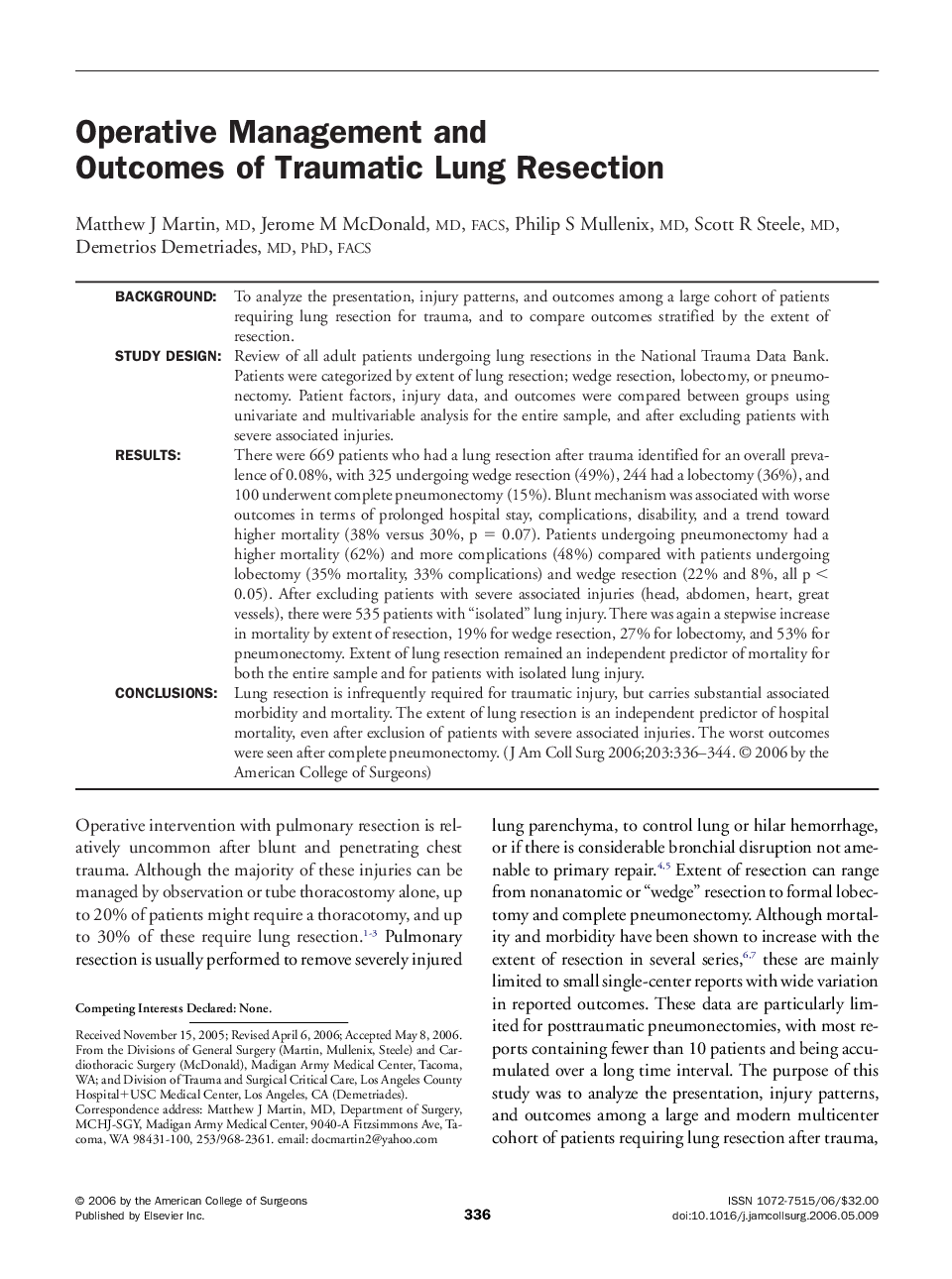| کد مقاله | کد نشریه | سال انتشار | مقاله انگلیسی | نسخه تمام متن |
|---|---|---|---|---|
| 4295950 | 1612334 | 2006 | 9 صفحه PDF | دانلود رایگان |

BackgroundTo analyze the presentation, injury patterns, and outcomes among a large cohort of patients requiring lung resection for trauma, and to compare outcomes stratified by the extent of resection.Study designReview of all adult patients undergoing lung resections in the National Trauma Data Bank. Patients were categorized by extent of lung resection; wedge resection, lobectomy, or pneumonectomy. Patient factors, injury data, and outcomes were compared between groups using univariate and multivariable analysis for the entire sample, and after excluding patients with severe associated injuries.ResultsThere were 669 patients who had a lung resection after trauma identified for an overall prevalence of 0.08%, with 325 undergoing wedge resection (49%), 244 had a lobectomy (36%), and 100 underwent complete pneumonectomy (15%). Blunt mechanism was associated with worse outcomes in terms of prolonged hospital stay, complications, disability, and a trend toward higher mortality (38% versus 30%, p = 0.07). Patients undergoing pneumonectomy had a higher mortality (62%) and more complications (48%) compared with patients undergoing lobectomy (35% mortality, 33% complications) and wedge resection (22% and 8%, all p < 0.05). After excluding patients with severe associated injuries (head, abdomen, heart, great vessels), there were 535 patients with “isolated” lung injury. There was again a stepwise increase in mortality by extent of resection, 19% for wedge resection, 27% for lobectomy, and 53% for pneumonectomy. Extent of lung resection remained an independent predictor of mortality for both the entire sample and for patients with isolated lung injury.ConclusionsLung resection is infrequently required for traumatic injury, but carries substantial associated morbidity and mortality. The extent of lung resection is an independent predictor of hospital mortality, even after exclusion of patients with severe associated injuries. The worst outcomes were seen after complete pneumonectomy.
Journal: Journal of the American College of Surgeons - Volume 203, Issue 3, September 2006, Pages 336–344